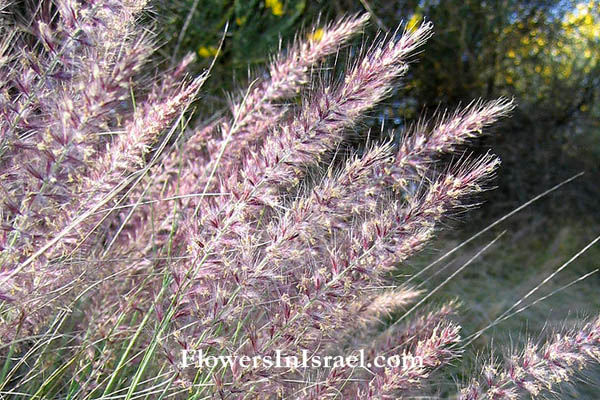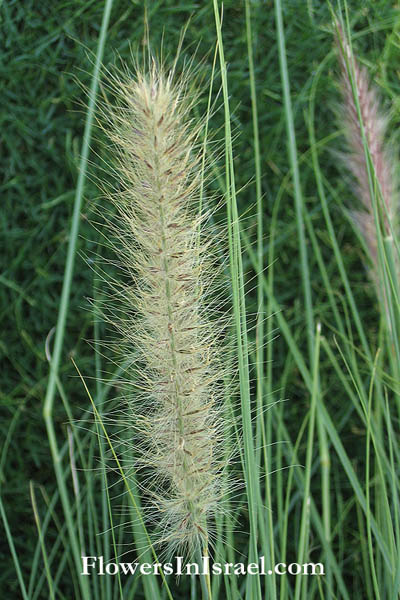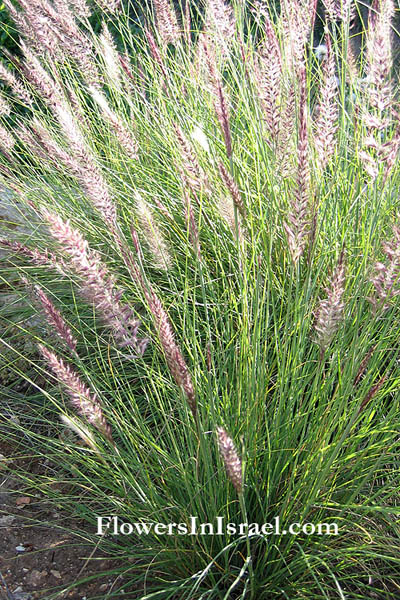Foxtail grass, Purple fountain grass, Crimson fountain grass,
Hebrew: זיף-נוצה מחוספס, Arabic: الثيوم المشرقي
| Scientific name: | Pennisetum orientale Rich. | |
| Synonym name: | Pennisetum asperifolium (Desf.) Kunth, Pennisetum setaceum (Forssk.) Chiov. | |
| Common name | Foxtail grass, Purple fountain grass, Crimson fountain grass | |
| Hebrew name: | זיף-נוצה מחוספס | |
| Arabic name: | الثيوم المشرقي | |
| Family: | Graminea (Poaceae), Grass Family, משפחת הדגניים |

|
| Life form: | Hemicryptophyte | |
| Leaves: | Alternate, rosette, entire | |
| Flowers: | Cream, green | |
| Flowering Period: | February, March, April, May, June, July, August, September, October | |
| Habitat: | Hard rock outcrops | |
| Distribution: | Mediterranean Woodlands and Shrublands, Semi-steppe shrublands, Shrub-steppes, Deserts and extreme deserts | |
| Chorotype: | Sudanian-African | |
| Summer shedding: | Perennating |

Derivation of the botanical name: Pennisetum, penna, a feather; seta, a bristle; feathery bristles. orientale, from the Orient; Eastern. asperifolium, asper, rough; folium, leaf; rough-leaved. setaceum, seta, britle; bristled. The Hebrew word: זיף-נוצה, ziv-notza, ziv =bristle, notza =feather; feathery bristles.

|